Non-fungible tokens or NFTs have become popular in the trading domain. Many investors are curious about NFT trading and the benefits of buying and selling these digital assets.
An NFT is a digital asset that you can sell in a marketplace, unlike cryptos. From sports trading cards to digital houses, investors are spending millions on NFT collectibles. If you’re curious about NFTs and want to get started on them, this blog will address all your questions.
How To Trade NFTs
1. Choose an NFT Marketplace
The first step is to find a reliable and trustworthy NFT Marketplace. You should create an account and follow the instructions. You should complete the account verification.
2. Add Funds To Your Account
Once you open an account, add funds. You will need sufficient funds to start trading NFTs. Make sure the NFT marketplace has a deposit method that you can use.
3. Research NFTs
Before deciding which NFTs you want to trade, you should learn about the market. Before you start to trade, make sure you develop an NFT trading strategy to have the best possible chance of profit.
4. Choose the NFTs
Once you feel comfortable, browse the NFT marketplace and pick the ones you want to trade. Some NFTs can be purchased instantly while others are sold through auctions.
5. Trade NFTs
Once you decide on which NFT to purchase, proceed to make that purchase or make a bid. You can then resell it or hold it in your account.
Tools:
- NFT Marketplace Account
- Trading Funds
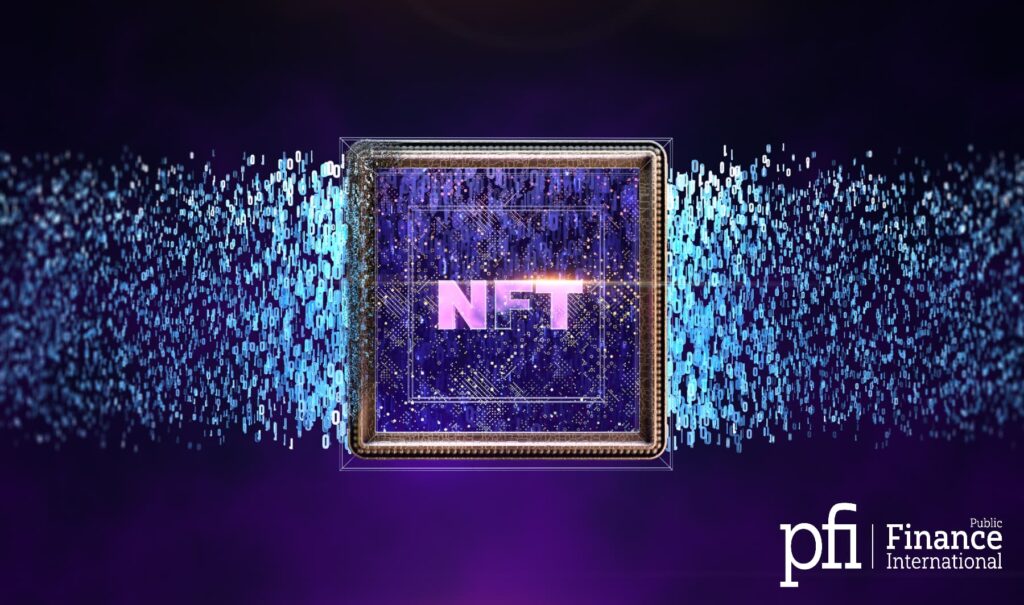
What Are NFTs?
Non-fungible tokens (NFTs) are a type of crypto asset with unique identification codes. NFT trading markets are slowly gaining traction – a staggering $174 million has been disbursed since 2017. NFTs indicate ownership of digital assets such as digital artwork, sports memorabilia, and video game avatars.
Each NFT collectible is unique and can’t be duplicated. Take it as a unique digital item that only the holder owns and can’t be replicated by anyone else on the blockchain. The unique identification codes distinguish them from each other in the blockchain.
NFTs are non-fungible, unlike cryptos like Bitcoin that is directly replaceable with one another. For example, a $1 coin has the same intent purposes as all the others but a rare trading card will differ from the others.
How Do NFTs Work?
NFTs are traded across the blockchain and some have sold for millions of dollars. Since NFTs are created with a unique impression, they are rare. These tokens do not have value based on the utility attached to them like cryptocurrencies. Instead, value is derived from the media attributed to them.
You can tokenize any real-world asset such as digital art and music with NFTs. Investors in this space have the potential to trade NFTs and earn profits based on the value attached to them.
These tokens are built and managed on the blockchain – the digital ledger technology system used by bitcoin and other cryptocurrencies. These digital tokens have a virtual certificate similar to a physical certificate that one receives when one possesses a real-world asset such as real estate.
Next, we must understand the vast difference between fungible and non-fungible tokens. NFTs are non-fungible tokens which means that you can buy and sell NFTs from other people but cannot exchange them for another token like-for-like.
For example, Bob can trade his Bitcoin with Melissa and none of the parties will be affected. If you want to trade your shiny Charizard Pokemon Card for a 1909 American Caramel Baseball card, it would be ineffective in the world of NFT trading. Now that we know the specifics of NFT trading, let’s learn how to trade NFTs.
How To Trade NFTs?
NFTs can be a great way to make money via buying and selling digital collectibles. Real-world tangible assets can be tokenized which reduces the probability of fraud. NFTs are indestructible so ownership of a token means that it cannot be destroyed, removed, or replicated.
Buying and selling NFTs is the simplest way to start with NFT trading.
How To Buy NFTs?
For trading NFTs, you need to be familiar with the cryptocurrency domain. If you do not already have a crypto exchange account, consider making one for NFT trading. To buy NFTs, you must create an account on your chosen platform. We will elaborate on this section later in the blog.
After creating an account on the established platforms, it’s time to create a crypto wallet. A crypto wallet is essential for getting started with NFT marketplaces. Digital wallet stores the non-fungible tokens that you earn, buy and sell. Users are given a unique seed phrase to get access to their wallets. Crypto wallets can either operate independently or be hosted on an exchange.
If you want to buy NFTs without third-party involvement, your digital wallet must be directly tied to the blockchain. Whichever crypto wallet you choose, it must be ideally compatible with the Ethereum blockchain.
Ethereum token standards ERC-721 and ERC-1152 are the two main blueprints that allow users to create and deploy their non-fungible tokens in the blockchain. Once you have bought ETH (the cryptocurrency native to the Ethereum blockchain) and selected the NFT exchange, transfer it to your digital wallet.
This process varies depending on your wallet, the exchange platform through which you buy NFTs, and the kind of NFT marketplace you wish to trade on. Once your wallet is adequately connected and funded, you can buy NFTs. Depending on the NFT marketplace, various restrictions can be imposed on the holder of the specific NFT.
How To Sell NFTs?
Once you own an NFT, the digital asset is yours to store or trade in your crypto wallet. Remember that ownership rights do not directly translate to reproducing or replicating the NFT in any form.
Unless there is a direct agreement between the holder and creator, you can only sell your tokens in the blockchain. Note that NFT tokens are also immutable which means that holders only possess the NFTs, not the company that creates them. This is also beneficial for the creator as digital pieces can be traced back to them without the need for third-party verification.
For selling NFTs, you’ll need to upload the token to your marketplace of choice. NFT marketplaces charge a fee for NFT sales which fluctuates based on the blockchain network. You can list your digital asset for sale at a pre-determined price or opt for auction-style sales for numerous bids from potential buyers.
The marketplace will handle the process of transferring the token from the seller to the buyer. The crypto funds will be transferred to your wallet sans the listing fee and other blockchain computing charges.
How To Create NFTs?
The allure of NFTs comes from the creators themselves–artists, musicians, writers, and filmmakers alike. Anyone can convert a digital asset into an NFT for selling on a marketplace.
For creating NFTs, the NFT minting process requires the following steps:
- Similar to the process of buying and selling NFTs, you need to open a crypto wallet and have it funded through Ether.
- Click on the “create” button and upload your work. It can range from different kinds of art, music, or even property.
- List the NFT for sale or opt for sale via auction if you want to receive biddings from numerous buyers.
The value of an NFT has certainly skyrocketed in the last couple of years due to the polarization of digital art. There are numerous perks to choosing NFTs as a viable platform for creating and selling art but there are also risks attributed to it.
What Is An NFT Marketplace?
An NFT Marketplace is the established platform that allows tokens to be created, sold and stored in crypto wallets. NFT Marketplaces fall into three primary categories:
- Open Marketplace: In this kind of marketplace, anyone can buy, sell or mint NFTs. Open Marketplaces are typically responsible for minting NFTs for you though creators also have the freedom to mint their work.
- Closed Marketplace: All the minting processes are controlled by the marketplace as it is more restricted.
- Proprietary Marketplace: A marketplace where NFTs are copyrighted by the company and sold on the platform concurrently
Most marketplaces offer step-by-step guides to simplify the minting process for a beginner. Once you have created a marketplace account, you should connect your wallet to the marketplace. Some NFT traders subscribe to various marketplaces to get regular updates on new NFT drops.
When highly anticipated NFTs are released on different marketplaces, investors tend to act quickly. A lot of NFT news updates are even shared on social media sites like Twitter and Discord as well as specialized investing platforms like Rarity Tools.
Best NFT Trading Platforms and Marketplaces
When you’re just starting, it can be daunting to navigate through the best NFT marketplaces that suit your preferences and budget. There are dozens of NFT marketplaces available online that allow traders to exchange tokens at a nominal fee.
We have compiled some of the most popular NFT trading platforms below.

PFI Rating: 4.9/5
OpenSea
OpenSea is one of the largest platforms for trading digital collectibles. The OpenSea NFT marketplace is open to a sea of blockchain networks–such as Ethereum, Polygon, and Klatyn.
The site offers NFTs in various areas such as music, sports, art, fashion, games, and collectibles. The OpenSea platform is great for investors new to NFT trading as the site offers various learning resources and a user-friendly interface. To use this platform, you must choose the supported cryptocurrency wallets such as Metamask, CoinbaseWallet, Portis, Dapper, Trust Wallet, Opera, and more.
Creators can mint their own NFTs on the blockchain with the item-minting feature. When buying NFTs through the OpenSea platform, you will need to pay a listing fee for your purchase. The fees on this platform are usually expensive but you can create a collection of NFTs without extra cost.
On OpenSea Official Website
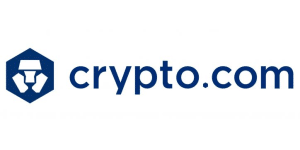
PFI Rating: 4.9/5
Crypto.com
As the leading crypto exchange platform, Crypto.com has expanded into a wide range of other markets. When it comes to NFT trading, Crypto.com houses numerous NFT collectibles.
Unlike other leading marketplaces, this platform also offers the option of depositing funds via fiat money. U.S. clients can deposit funds into their accounts via ACH instantly without an additional fee. You can even use your debit or credit card to fund your crypto account.
Once your account is funded, browse through the many NFTs available on Crypto.com. The best part of trading NFTs on this platform is that transactions are mostly free of charge. After buying a specific NFT, you can attempt to relist it on the marketplace.
On Crypto.com Official Website
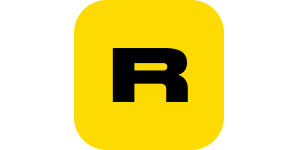
PFI Rating: 4.7/5
Rarible
Rarible is another NFT trading platform that connects buyers with sellers. An Ethereum-based platform mainly focusing on art assets, Rarible facilitates the creation, sale, and purchase of ownership rights.
Rarible is a decentralized marketplace which means that you can trade NFTs without going through a third-party source. The token ERC-20 RARI establishes your position as a part of the Rarible community and an owner.
Regarding paying for your NFTs, the platform supports crypto and debit/ credit cards. Rarible is home to its native token RARI and also distributes 75,000 RARI every week. Active traders are rewarded with RARI tokens when they buy or sell NFTs on the platform. With that said, each transaction attracts a commission of 2.5% of the NFT trading price.
On Rarible Official Website
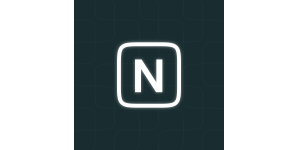
PFI Rating: 4.7/5
Nifty Gateway
Compared to Rarible, Nifty Gateway is a centralized marketplace where you can buy and sell art and collectibles known as “Nifties.” Many famous digital creators such as Beeple, Daniel Arsham, and Pak sold their artwork on the Nifty Gateway platform.
Nifty Gateway made headlines when the famous artwork by Grimes raised $6 million on the platform. Since then, Nifty Gateway has partnered with innovative brands to offer limited editions of digital artwork for a fixed period. The platform is attractive to creators as they receive royalties on NFT sales. So every time a secondary sale of the digital asset occurs, the original creators are compensated.
This means that creators are continuously benefitting from the trading of their creations. The marketplace handles all the technical aspects of creating and selling NFTs so it is helpful for digital creators navigating the NFT world.
On Official Website
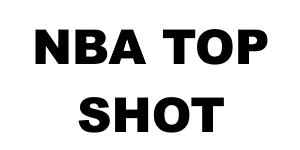
PFI Rating: 4.7/5
NBA Top Shot
An NFT marketplace for sports fans, NBA Top Shot allows holders to trade basketball clips. NBA Top Shot is a collaboration between the NBA and a blockchain-based firm called Dapper Labs.
NBA Top Shot has a large community of followers where traders can access videos and 3D spatial designs of gameplay clips through “packs.” For NBA fans, this platform is a clear choice among other NFT trading platforms.
On Official Website
NFT Trading Risks
NFTs are unpredictable assets that can gain or lose their value depending on the media attached to them. NFT scams are not uncommon within the trading marketplace. Some of them are listed below:
- Cyber Threats and Online Frauds: NFTs are not impervious to online scams. From deceptive links promoting new NFT projects and fake marketplace websites, there are always threats to trading NFTs online.
- Smart Contract Risks: The risk of smart contracts is apparent in the NFT trading community. Poor smart contract security has led to numerous breaches and NFTs being stolen unannounced.
- Intellectual Property Rights: The ownership of an NFT is not completely safe. Sometimes people sell replicas of an original NFT as you do not have intellectual property rights. In such cases, it’s always wise to involve an international governing body to impose trademarks.
Conclusion
NFTs are valuable digital assets that come with their perks and downsides. As an investor, you should explore different forms of trading before exploring the world of NFT marketplaces.
We hope this blog gave you a brief understanding of NFTs and the different trading platforms.